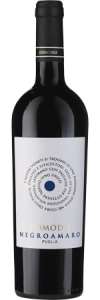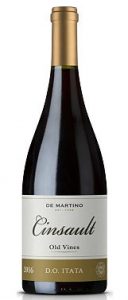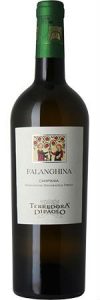We tasted: 2016 Furmint ‘F’, Tornai (Nagy-Somloi, Hungary) 12.5% Vol £11.95 Vinoteca
Tasting Notes
 Emma says: “I was surprised that the search for Furmint wasn’t that hard, but maybe that is in contrast to the Marsanne mission last week. Oh I miss the heady weeks of tasting Merlot. I’m lucky to have a gorgeous wine bar/come shop near the office called Vinoteca and found a Furmint there. Served to me by a very excited Hungarian who was pleased I was specifically looking for a wine from her native country.
Emma says: “I was surprised that the search for Furmint wasn’t that hard, but maybe that is in contrast to the Marsanne mission last week. Oh I miss the heady weeks of tasting Merlot. I’m lucky to have a gorgeous wine bar/come shop near the office called Vinoteca and found a Furmint there. Served to me by a very excited Hungarian who was pleased I was specifically looking for a wine from her native country.
I’ve tasted a few dry Tokajs in my time. That is the term often used in Hungary to indicate it is the Furmint grape used to make a dry wine rather than their more famous sweet version. It can be blended with a bit of other local grapes like Harsevelu too. And I have found that some producers tend to oak it quite a bit which gives it a more rich and spicy character.
The thing about Furmint as a grape is that it has massive acidity and not a great deal of fruit flavour. I am a faithful acid junkie but even Furmint has challenged me in the past. I’m interested to see what Andy makes of it.
Onto the wine in question. I was really pleased by the aroma, it had a nice marzipan character overlaying quince paste and a salty sea air note. But to taste it was totally different, the acidity hit me like a slap on the face and after that I really didn’t get much in the way of fruit. A bit of green apple, but then more salinity and a firm mineral bite, I can only describe it as licking wet stones. If I had to compare it to another wine it would be Chablis but it makes that style of wine positively fruity in comparison. It also makes me think of the wines we taste just as they have finished ferment in our post harvest visits, at that point they are full of nervy acidity and are difficult to taste and I’m sad to say that was how I felt tonight too. Perhaps it would be interesting to give it more time to age since that would soften out the acidity a bit more and that often allows some other interesting flavour dimensions to come through.
We had it with a leek and gorgonzola risotto which I would have thought is a top food match; creamy so the acidity is balanced out and without bold flavours that would overshadow the wine. It did work relatively well but the wine is so delicate in flavour even that type of meal did overshadow it a bit.”
Andy says: “Having just read Emma’s notes, I need to make a small modification to mine. I too [like to think I] am an ‘acid junkie’, but I didn’t get acid here. Maybe it was all the cheese I ate while cooking.
I found this wine to be quite dull. It was very dry, and there was no real flavour of any description, I can’t even describe it as ‘wine-y’. It was like it was flat and needed some fizz – in the same way that flat Coke tastes nothing like Coke. It needed some life in it. It did become a little more flavoursome as it warmed up, but it was nothing to write home about.
I’ve had the sweet version of this grape, and that’s winning.”
Buying Guide
Furmint is a Hungarian white grape that is most typically used as one of the grapes to make their famous sweet wine Tokaji. It may be difficult to find a dry Furmint so if you have trouble then any Tokaji would be a nice experience as the first sweet wine for our year of grape adventures.


 We tasted: Houdamond Pinotage, £13, M&S
We tasted: Houdamond Pinotage, £13, M&S




 Emma says: “
Emma says: “


 Emma says:”I really wanted to find a 2017 vintage Verdejo this week because I have always seen this as a grape that needs to be youthful to show well.
Emma says:”I really wanted to find a 2017 vintage Verdejo this week because I have always seen this as a grape that needs to be youthful to show well.
 Emma says: “This week Andy really held me back. I was ready to crack open a fine bottle of Bordeaux for our Cabernet experience. One of those really pricey bottles that I’ve saved for a “special” occasion. Since I never seem to find a grand enough moment to fit opening one, I thought 52 grapes might fit the bill. But no, Andy was my kill joy, he said we needed to find something similar to what other readers might be drinking. Do I sound bitter?
Emma says: “This week Andy really held me back. I was ready to crack open a fine bottle of Bordeaux for our Cabernet experience. One of those really pricey bottles that I’ve saved for a “special” occasion. Since I never seem to find a grand enough moment to fit opening one, I thought 52 grapes might fit the bill. But no, Andy was my kill joy, he said we needed to find something similar to what other readers might be drinking. Do I sound bitter?
 Emma says: “I’ve been looking forward to this week because I knew exactly which wine I wanted us to taste. It is actually quite rate to find a 100% Cinsault wine but I have fortunately found my ultimate one when visiting a favourite Chilean producer De Martino three years ago.
Emma says: “I’ve been looking forward to this week because I knew exactly which wine I wanted us to taste. It is actually quite rate to find a 100% Cinsault wine but I have fortunately found my ultimate one when visiting a favourite Chilean producer De Martino three years ago.
 Emma says: “An Italian grape this week and one with a name that I think does it a disservice. Pronounced Fal-an-gheena, it really doesn’t have the prettiest of names. It has an aggressive tone which is a sensory turn off for me. Asking for a glass of Gavi or Fiano (other Italian whites) in a wine bar sounds so much more elegant.
Emma says: “An Italian grape this week and one with a name that I think does it a disservice. Pronounced Fal-an-gheena, it really doesn’t have the prettiest of names. It has an aggressive tone which is a sensory turn off for me. Asking for a glass of Gavi or Fiano (other Italian whites) in a wine bar sounds so much more elegant.